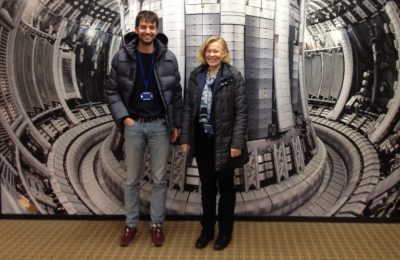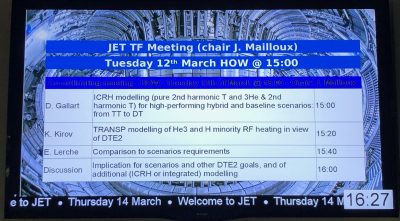
The Joint European Torus (JET) is getting ready for a new campaign with deuterium (D) fuel mixture at the Culham Centre for Fusion Energy (CCFE), UK. After this D campaign, a tritium (T) campaign is planned to follow. These campaigns are made in preparation for the eventual D-T campaign with a fusion reactor relevant 50%-50% D-T fuel mixture. It will be the second D-T campaign at JET; the first D-T campaign at JET was carried out in 1997. The production and physics of born alphas (He-4) at 3.5MeV due to D-T fusion reactions will be tested and assessed with the ITER-like-wall made of beryllium (Be) and tungsten (W).
As high-performance discharges are sought, the control of high-Z impurity transport will play a key role during this campaign. One of the main goals is to keep the impurity accumulation at the plasma core low. In this regard, large efforts have been carried out by the experimental and modelling team during the preparation of these campaigns.

In this regard, two of our Fusion team members, Mervi Mantsinen and Dani Gallart, participated in the modelling and analysis campaign during the 4th-15th of March at JET. This campaign was particularly useful to gather the experimental team members and share information and last results. In order to take advantage of the presence of the large number of scientists during those two weeks, several meetings were organised.
In one of the meetings, Dani Gallart gave a talk on a task force meeting about the heating differences arising from changing a plasma composition from T to DT. This is an important aspect to take into account since these differences that have been found will most probably apply to both flagship plasma scenarios under development: baseline and hybrid. At the moment, JET is going to be the closest test for ITER relevant scenarios in DT in preparation of ITER operation.
